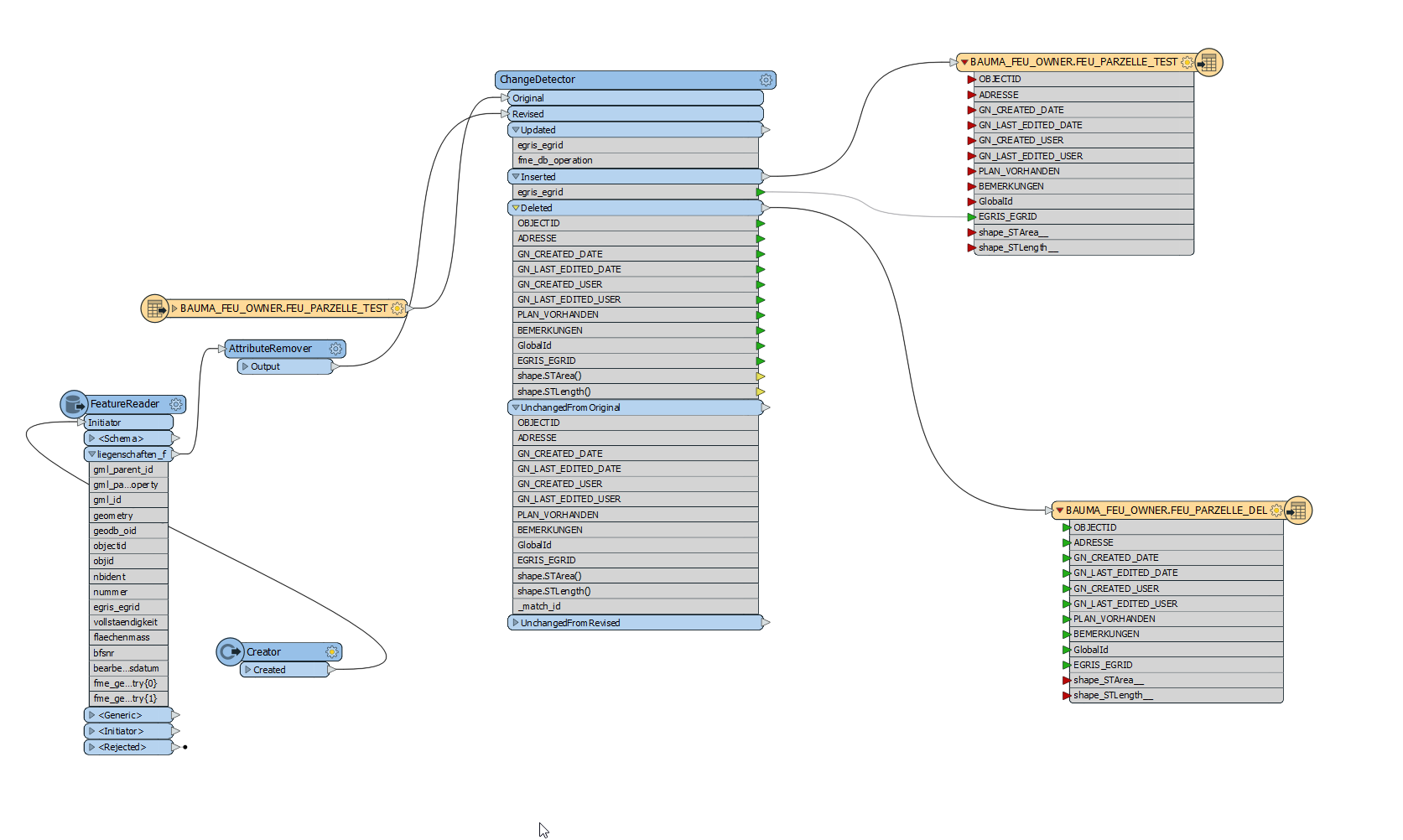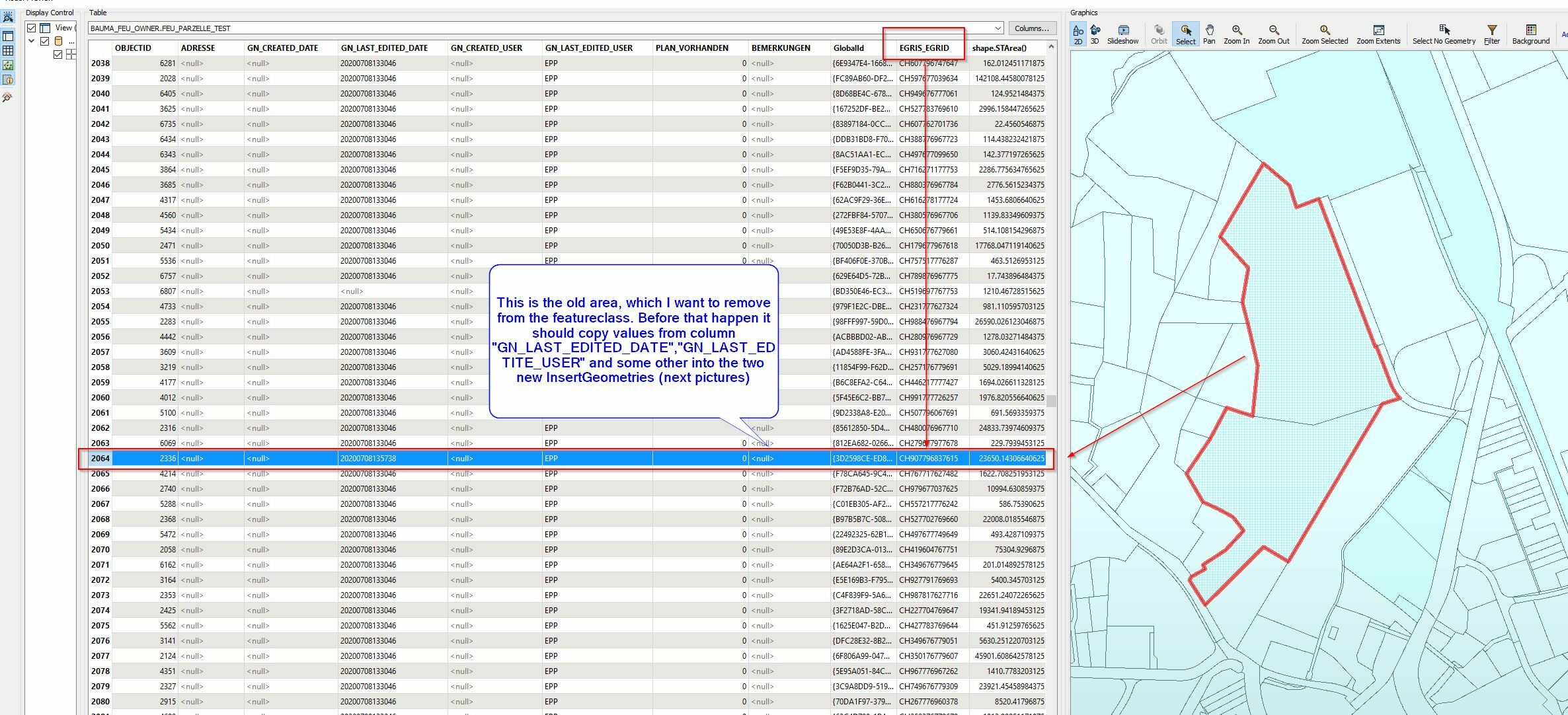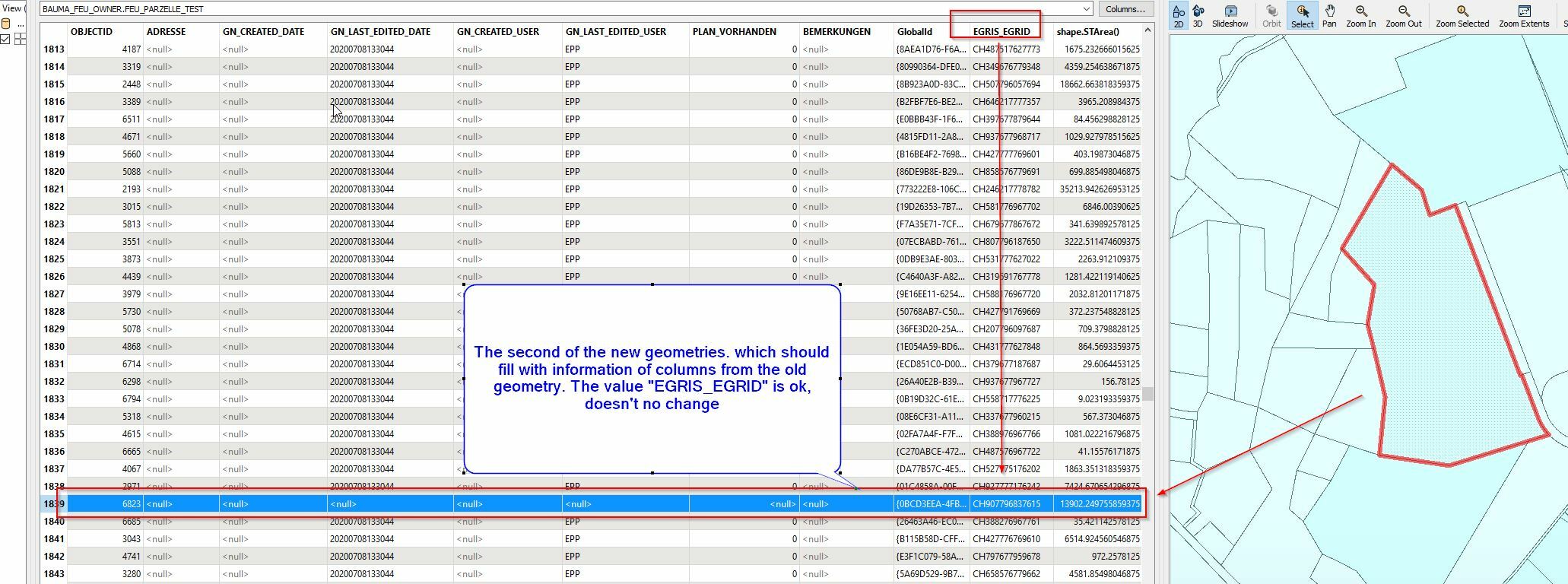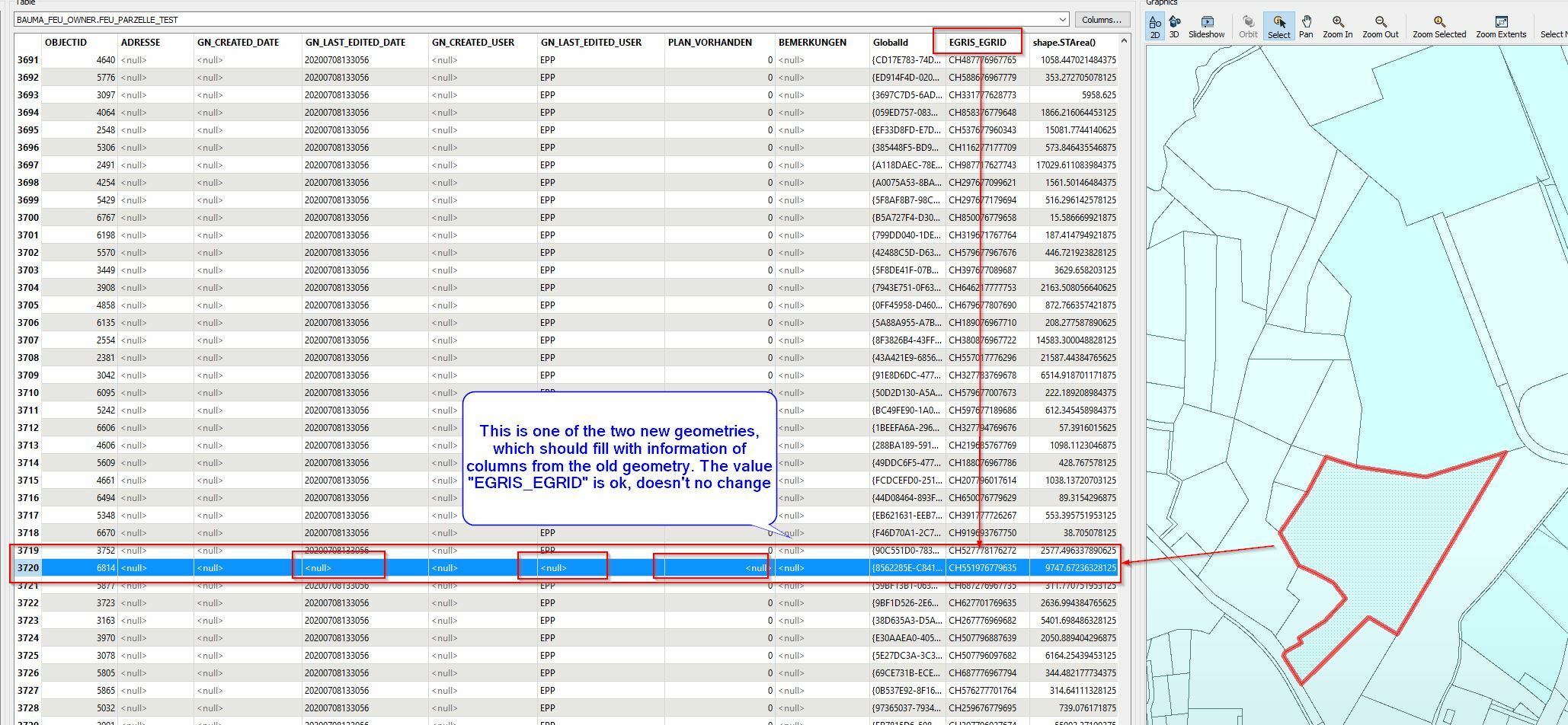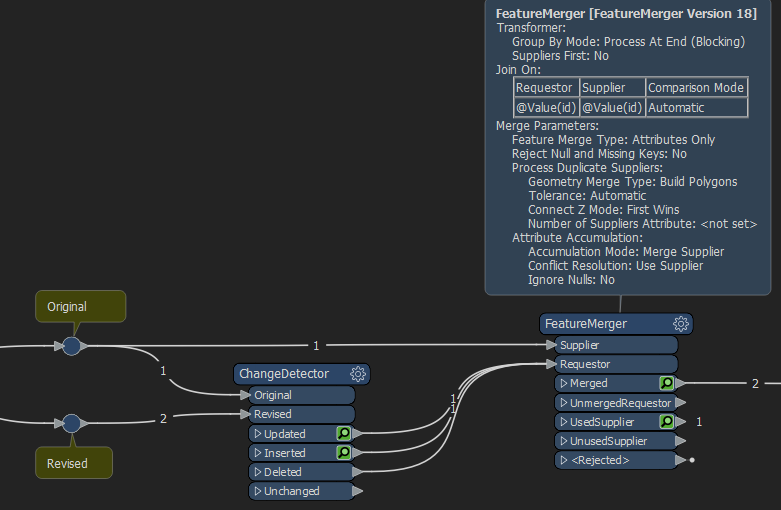Hello
I have two datasources: one is sde featureclass with status quo data, the other is a WFS-Service, which supplies more current data. This data I compare with Changedetector on their geometries and could change this succesfully (-> the geometry) . But now I have the problem, that both dataset have a totally different nongeometry attributes. I don't need the nongeometry from the WFS. But after the delete and/or insert process of the ChangeDetector i lost the old nongeometry attribute information from data, which for example in the new StatusQuo a geometry is now split to two geometries.
Has someone a workaround for a solution for this trouble?
Sorry for my english, but I hope you understand my problem
Thanks





